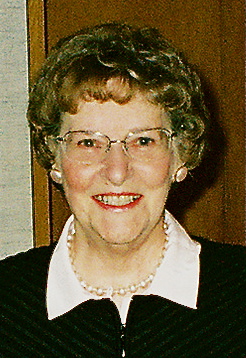Elizabeth J. Feinler facts for kids
Quick facts for kids
Elizabeth "Jake" Feinler
|
|
|---|---|

Jake Feinler, c.2011
|
|
| Born |
Elizabeth Jocelyn Feinler
March 2, 1931 Wheeling, West Virginia, U.S.
|
| Nationality |
|
| Alma mater | West Liberty State College and Purdue University |
| Known for | Running the original ARPANET NIC at SRI |
| Scientific career | |
| Fields | Computer science |
| Institutions | SRI, NASA Ames, Computer History Museum |
Elizabeth Jocelyn "Jake" Feinler (born March 2, 1931) is an American computer scientist. She played a very important role in the early days of the internet. From 1972 to 1989, she led a team at the Stanford Research Institute (SRI). Her team managed the Network Information Center (NIC) for the ARPANET. This network later grew into what we now know as the Internet.
Contents
Early Life and Education
Jake Feinler was born on March 2, 1931, in Wheeling, West Virginia. She also grew up there. In 1954, she earned her first college degree from West Liberty State College. She was the first person in her family to go to college.
Career Journey
Starting Her Career in Science
Feinler was studying for an advanced science degree at Purdue University. She decided to take a break to work for a year or two. She worked at the Chemical Abstracts Service in Columbus, Ohio. There, she helped organize a huge list of all the world's chemical compounds.
This work made her very interested in how to manage large amounts of information. She never went back to her original science studies. Instead, in 1960, she moved to California. She joined the Information Research Department at the Stanford Research Institute (SRI). She helped create important handbooks there.
Building the Early Internet: ARPANET and NIC
In 1972, Doug Engelbart asked Feinler to join his research team at SRI. This team was supported by a part of the US military called DARPA. Her first job was to write a guide for the very first public showing of the ARPANET.
By 1974, she was in charge of planning and running the new Network Information Center (NIC) for the ARPANET.
What the NIC Did
The NIC was like a helpful guide for early internet users.
- It answered questions from users, first by phone and mail.
- It kept a directory of people, like a "white pages" phone book.
- It had a "yellow pages" guide listing network services.
- It also managed a handbook of rules for how the network worked.
When new computers joined the network, the NIC helped register their names. It also controlled who could access certain parts of the network. Feinler and her team worked with others to create "Request for Comments" (RFCs). These became the official technical notes for the ARPANET and later the Internet.
Growing the Network
Feinler's team created a simple way to name computers on the network in 1974. This list of names was updated almost every day. In 1975, a military agency took over the ARPANET. They split it into separate networks for research and military use. The NIC continued to be the main information center for these networks.
When e-mail and File Transfer Protocol (FTP) became available around 1976, the NIC used them. They could now send information to users directly over the network. In 1979, Feinler and her group looked for ways to handle even more names as the network grew.
In 1982, her team helped create "Whois". This was a way to look up information about people online. As the Internet got bigger, a new system called the Domain Name System was created. This system helped manage all the new names by dividing them up. Feinler's group became the main authority for naming on the Internet. They managed the names for important parts of the internet like `.mil` (military), `.gov` (government), `.edu` (education), `.org` (organizations), and `.com` (commercial). Even the ideas for these main categories came from the NIC team.
Later Career and Recognition
After leaving SRI in 1989, Feinler worked at the NASA Ames Research Center. She helped create rules for managing NASA's own internet system.
Feinler gave many of her early Internet papers to the Computer History Museum in Mountain View, California. After she retired from NASA in 1996, she volunteered at the museum. She helped organize all the historical materials.
In 2010, she wrote a history of the NIC. In 2012, Feinler was honored by being added to the Internet Hall of Fame. In July 2013, she received the Jonathan B. Postel Service Award. This award recognized her important work in developing and managing the early Internet.
Retirement and Volunteering
Around the year 2000, Feinler was inducted into the SRI Alumni Hall of Fame. In her retirement, she continues to volunteer at the Computer History Museum. She helps organize the many papers she collected about the Internet's early days. She also helps scholars who want to use these historical documents.
Her Nickname "Jake"
Feinler shared how she got her unique nickname, "Jake": When she was born, it was popular to have two names, like "Betty Jo." Her full name is Elizabeth Jocelyn Feinler. Her family planned to call her Betty Jo. But her older sister, who was only two years old, tried to say "Betty Jo." It sounded like "Baby Jake." Luckily, they dropped the "Baby" part!
See also
 In Spanish: Elizabeth J. Feinler para niños
In Spanish: Elizabeth J. Feinler para niños

